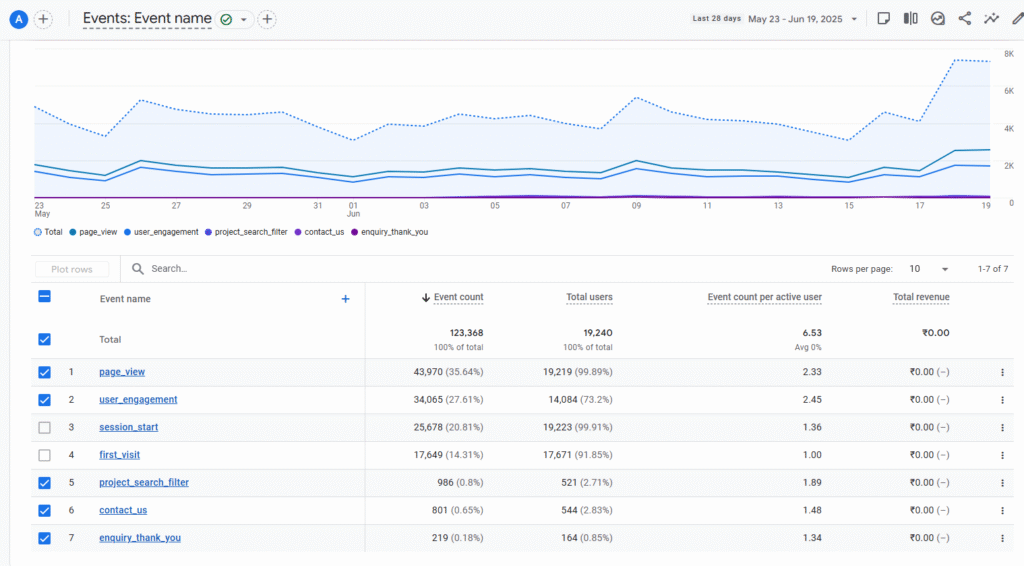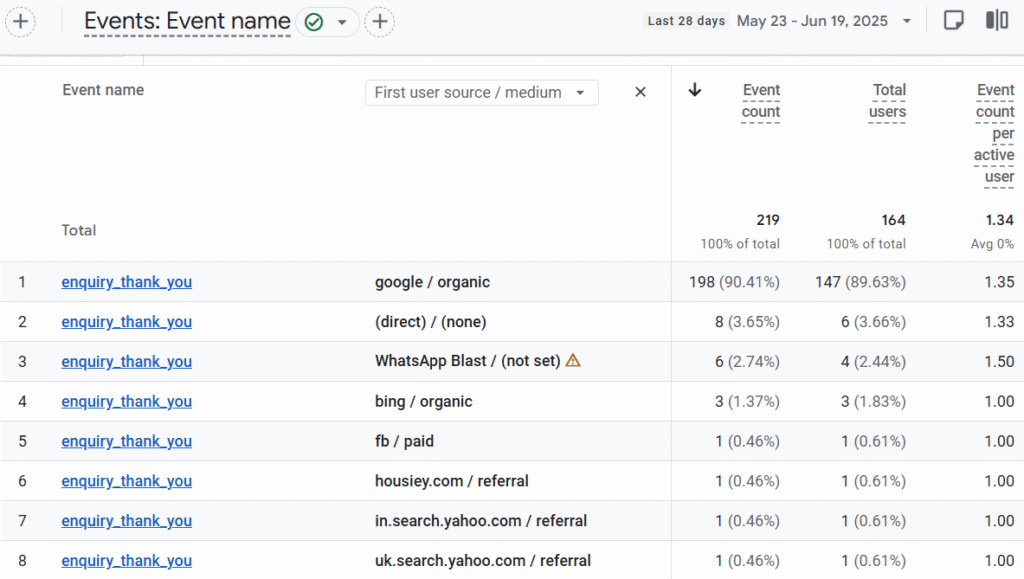You poured your heart and soul into your website. It’s live, it looks great, but let’s ask the most important question: Do you know if it’s actually working?
Imagine running a retail store without ever checking the sales figures. You wouldn’t know what’s popular, which marketing drives foot traffic, or if you’re even making a profit. It’s a guaranteed path to failure.
Yet, countless businesses run their websites this way every single day.
They have no idea how many people visit, where they come from, or what they do. This is the dangerous pitfall of missing analytics and conversion tracking. You simply can’t improve what you don’t measure.
As an SEO enthusiast and website strategist, I’ve seen firsthand how this “blindfold of ignorance” cripples businesses. They’re pouring resources into their online presence with absolutely no idea if they’re getting any return.
Let’s not just talk about the problem. Let’s walk through the solution.
The Data Void: What You Don’t Know is Costing You
Without analytics, your website exists in a black box, leaving you guessing about critical performance metrics. This means you’re missing:
- Visitor Insights: Who your audience is, what they’re interested in, and what technology they use.
- Traffic Sources: You can’t tell if your SEO, social media, or paid ad efforts are effective.
- User Behavior: Which pages are popular, and more importantly, which ones are causing people to leave your site for good.
- Content Performance: You’ll have no idea if that blog post you spent hours writing is actually resonating with your audience or just collecting digital dust.
Operating without this information isn’t just inefficient; it’s a direct path to wasted resources and missed opportunities.
The Solution: Your 3-Step Action Plan to Start Tracking
Talking about “data” can feel intimidating, but getting started is easier than you think. Here is a straightforward path to take the blindfold off.
Step 1: Install a Free Analytics Tool
Before you can measure anything, you need the right tool. For 99% of businesses, the answer is Google Analytics 4 (GA4). It’s the industry standard, it’s incredibly powerful, and it’s free.

- How to do it: Go to the Google Analytics website, create a new account, and follow the instructions to get a small piece of code (a “tag”). This tag needs to be added to every page of your website. If you use a platform like WordPress, Shopify, or Squarespace, there are simple plugins and integrations that let you do this just by copying and pasting the tag ID—no complex coding required.
Step 2: Define and Track Your “Wins” (Conversions)
Analytics tells you what happened. Conversion tracking tells you if what happened mattered. A “conversion” is any key action you want a user to take.

- How to do it: First, identify your goals.
- For a service business: A conversion is likely a “Contact Form Submission” or a “Phone Number Click.”
- For an e-commerce store: It’s a “Product Purchase” or an “Add to Cart.”
- For a consultant: It might be a “PDF Guide Download” or a “Newsletter Signup.”
Step 3: Ask the Right Questions
Once data starts flowing in (give it a week or two), your job is to be curious. You don’t need to be a data scientist. Just start by asking simple, powerful questions:

- “Which page on my site do people visit most right before they leave?” (This helps you find underperforming pages).
- “Which marketing channel (e.g., Google, Facebook) brought in the most contact form submissions this month?” (This tells you where to focus your marketing budget).
- “What are the top 5 blog posts that people are finding through Google search?” (This shows you what content is resonating and what to create more of).
Looking at your data with these questions in mind transforms it from a confusing spreadsheet into an actionable roadmap for growth.
Why This Matters: Data-Driven Companies Win
This isn’t just a theoretical exercise. The impact is staggering. According to a landmark report by McKinsey, companies that use data to make decisions are:
- 23 times more likely to attract new customers.
- 6 times more likely to keep those customers.
- 19 times more likely to be profitable.
Even for small businesses, the principle is the same. The giants like Netflix and Amazon use analytics to drive billions in revenue, but you can use the exact same logic to get one new client, make ten extra sales, or simply stop wasting money on ads that don’t work.
The Future is Data-Driven
As we move further into 2025, the importance of data is only growing. The landscape is shifting towards privacy-focused analytics, AI-driven predictions, and streamlined tools that make data easier to understand. Ignoring this trend means getting left behind.
Don’t let your website operate in the dark. Taking these first simple steps to implement analytics and tracking will be the single most impactful decision you make for your online presence this year.
Ready to stop guessing and start growing? This is how you turn your website into a powerful, data-driven asset.
